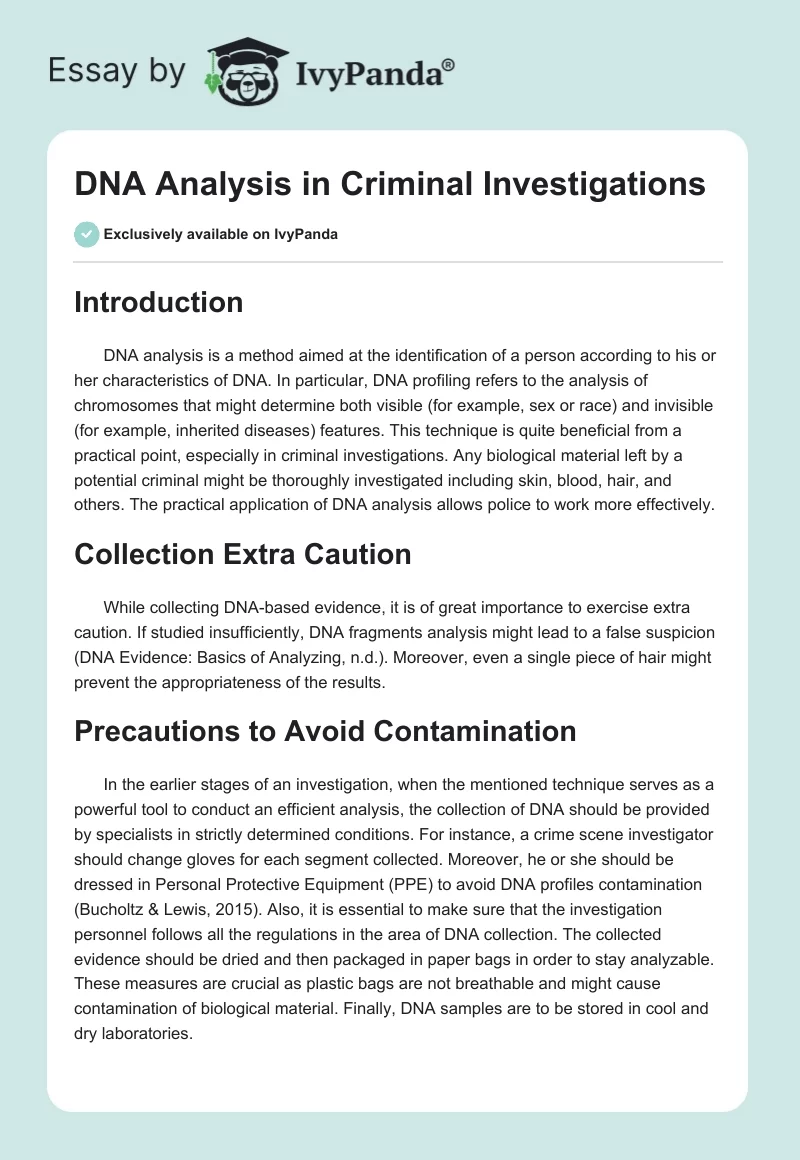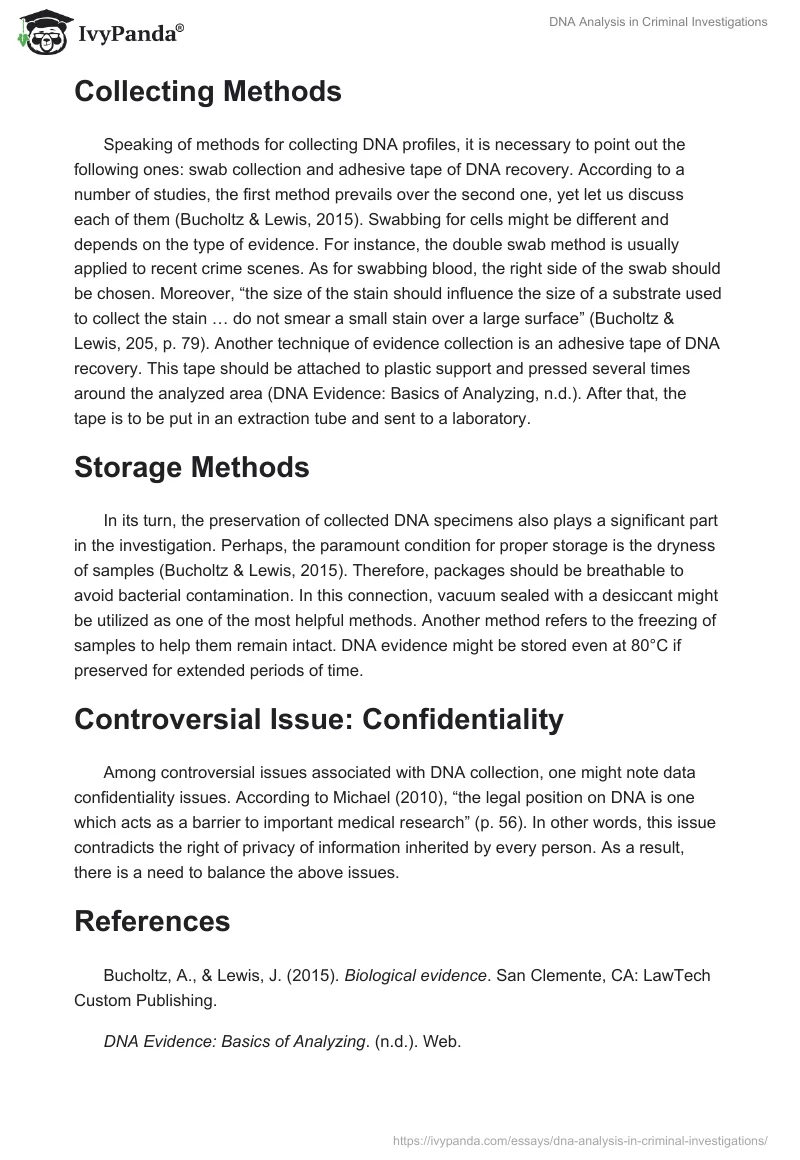Introduction
DNA analysis is a method aimed at the identification of a person according to his or her characteristics of DNA. In particular, DNA profiling refers to the analysis of chromosomes that might determine both visible (for example, sex or race) and invisible (for example, inherited diseases) features. This technique is quite beneficial from a practical point, especially in criminal investigations. Any biological material left by a potential criminal might be thoroughly investigated including skin, blood, hair, and others. The practical application of DNA analysis allows police to work more effectively.
Collection Extra Caution
While collecting DNA-based evidence, it is of great importance to exercise extra caution. If studied insufficiently, DNA fragments analysis might lead to a false suspicion (DNA Evidence: Basics of Analyzing, n.d.). Moreover, even a single piece of hair might prevent the appropriateness of the results.
Precautions to Avoid Contamination
In the earlier stages of an investigation, when the mentioned technique serves as a powerful tool to conduct an efficient analysis, the collection of DNA should be provided by specialists in strictly determined conditions. For instance, a crime scene investigator should change gloves for each segment collected. Moreover, he or she should be dressed in Personal Protective Equipment (PPE) to avoid DNA profiles contamination (Bucholtz & Lewis, 2015). Also, it is essential to make sure that the investigation personnel follows all the regulations in the area of DNA collection. The collected evidence should be dried and then packaged in paper bags in order to stay analyzable. These measures are crucial as plastic bags are not breathable and might cause contamination of biological material. Finally, DNA samples are to be stored in cool and dry laboratories.
Collecting Methods
Speaking of methods for collecting DNA profiles, it is necessary to point out the following ones: swab collection and adhesive tape of DNA recovery. According to a number of studies, the first method prevails over the second one, yet let us discuss each of them (Bucholtz & Lewis, 2015). Swabbing for cells might be different and depends on the type of evidence. For instance, the double swab method is usually applied to recent crime scenes. As for swabbing blood, the right side of the swab should be chosen. Moreover, “the size of the stain should influence the size of a substrate used to collect the stain … do not smear a small stain over a large surface” (Bucholtz & Lewis, 205, p. 79). Another technique of evidence collection is an adhesive tape of DNA recovery. This tape should be attached to plastic support and pressed several times around the analyzed area (DNA Evidence: Basics of Analyzing, n.d.). After that, the tape is to be put in an extraction tube and sent to a laboratory.
Storage Methods
In its turn, the preservation of collected DNA specimens also plays a significant part in the investigation. Perhaps, the paramount condition for proper storage is the dryness of samples (Bucholtz & Lewis, 2015). Therefore, packages should be breathable to avoid bacterial contamination. In this connection, vacuum sealed with a desiccant might be utilized as one of the most helpful methods. Another method refers to the freezing of samples to help them remain intact. DNA evidence might be stored even at 80°C if preserved for extended periods of time.
Controversial Issue: Confidentiality
Among controversial issues associated with DNA collection, one might note data confidentiality issues. According to Michael (2010), “the legal position on DNA is one which acts as a barrier to important medical research” (p. 56). In other words, this issue contradicts the right of privacy of information inherited by every person. As a result, there is a need to balance the above issues.
References
Bucholtz, A., & Lewis, J. (2015). Biological evidence. San Clemente, CA: LawTech Custom Publishing.
DNA Evidence: Basics of Analyzing. (n.d.). Web.
Michael, K. (2010). The legal, social and ethical controversy of the collection and storage of fingerprint profiles and DNA samples in forensic science. IEEE, 5(2), 48-60.


